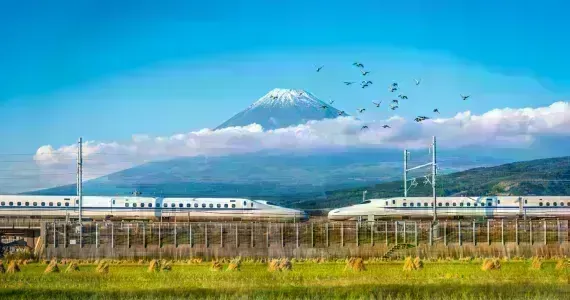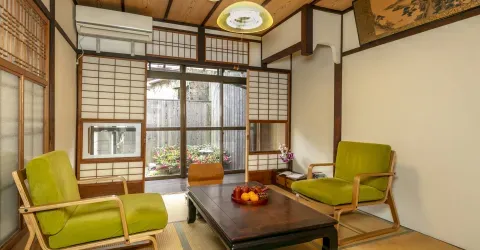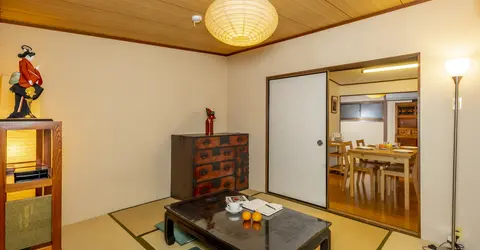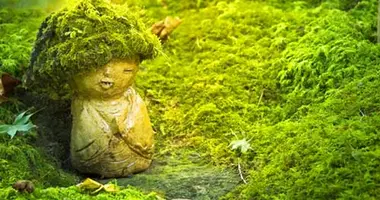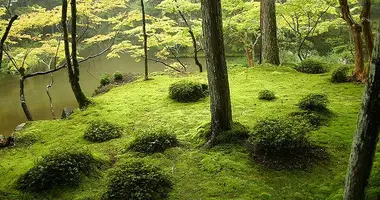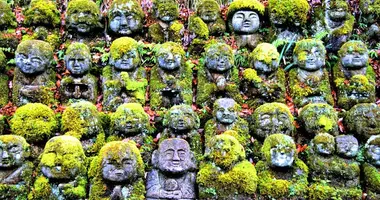The Byōdō-in, a splendor of Buddhist architecture in Uji
- Published on : 25/05/2024
- by : J.L.T.B. / J.R.
- Youtube
The Byōdō-in is a majestic Buddhist temple located in the small town ofUji, some fifteen kilometers southeast of Kyoto. A UNESCO World Heritage Site and Japan's national treasure, this architectural gem has been attracting visitors for over 1,000 years. Its main building, the Phoenix Pavilion (鳳凰堂 Hōō-dō), is a masterpiece of Japanese aristocratic art from the Heian period (794-1185). A true invitation to serenity, the Byōdō-in is a must-see on a trip between Kyoto and Nara.
Introduction and history of the Byōdō-in temple
The Byōdō-in Buddhist temple was founded in 1052 by Fujiwara no Yorimichi in Uji, Kyōto Prefecture. Previously, the site was the country residence of Minamoto no Tōru. Unfortunately, the other buildings in the complex were destroyed during a civil war in 1336. Today, only the iconic Phoenix Pavilion (鳳凰堂 Hōō-dō), also known as Amida-dō, remains.
The Phoenix Pavilion (Hōō-dō), architectural jewel of the Byōdō-in
The Phoenix Pavilion consists of a central hall flanked by two wings reminiscent of a phoenix spreading its wings. On its roof sit two magnificent golden phoenix statues (鳳凰 hōō). Inside, the pavilion houses an impressive 2.84-meter-high gilded wooden statue of Amida Buddha dating from 1053. The doors are adorned with superb Yamato-e-style paintings depicting landscapes of the four seasons.
The treasures of the Byōdō-in
The Byōdō-in temple contains many national treasures, starting with the statue of Amida Buddha and the other works surrounding it. The landscapes painted on the north doors of the Phoenix Pavilion also date from 1053. The Hoshokan Museum allows visitors to admire the temple's precious artifacts and discover its fascinating history.
The magnificent Japanese garden of Byōdō-in
The Phoenix Pavilion is majestically reflected in thepond of the surrounding "Pure Land" garden. This landscape ensemble of great beauty has been designated a National Historic Site and a Place of Picturesque Beauty. In spring, cherry blossoms adorn the garden with their delicate colors from the start of the season, before giving way to wisteria from mid-April. The Toka tea room allows you to take full advantage of this enchanting setting while sipping a delicious green tea overlooking the garden.
Visit the Byōdō-in
The Byōdō-in temple is located in Uji, about 15 km southeast of Kyoto. From Kyoto, the temple is easily reached in 20 to 30 minutes via the JR Nara line. From Osaka, allow around 1 hour via Kyoto or the Keihan line. The Byōdō-in is open daily from 8:30 am to 5:30 pm. Admission is 600 yen for adults (with discounts for students, children and groups). A visit to the Byōdō-in combines perfectly with a visit to other interesting sites in Uji, such as the Ujigami Shrine, the Uji River or Temple Kosho-ji.
The major cultural importance of the Byōdō-in in Japan
The Byōdō-in was designated a UNESCO World Heritage Site in 1994. Its Phoenix Pavilion, the Amida statue and many other works it contains are designated national treasures. The unique architectural style of the Phoenix Pavilion has strongly influenced the construction of other temples in Japan. Since 1951, this jewel has appeared on the back of 10-yen coins, symbolizing its longevity and cultural significance for the Japanese. More information on the official website: http: //www.byodoin.or.jp.
Get around with the Japan Rail Pass!
You may also be interested in
Address, timetable & access
Address
Timetable
40-minute train ride from Keihan-Sanjo to Uji station on the Keihan-Uji line (change at Chushojima, ¥310-390) or 30-minute train ride from Kyoto station to Uji station on the JR Nara line (¥240), then 10-minute walk. Take the south exit.Price
Ensemble ¥600/Phénix Hall ¥300Access
TLJ 9h - 16h from December to February, 8h30 - 17h30 from March to November.Website
http://www.byodoin.or.jp













